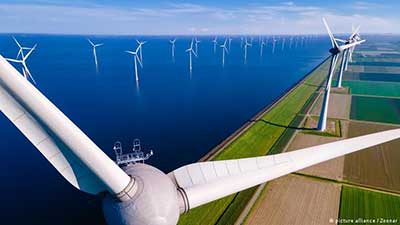Date: 29/10/2022
Relevance: GS-3: Conservation, environmental pollution and degradation.
Key Phrases: World Energy Outlook, Transition From Fossil Fuels, Plateauing Of Fossil Fuel Demand, Clean Energy Investments, Robust Growth
Why in News?
- The global energy crisis triggered by Russia’s invasion of Ukraine is causing profound and long-lasting changes that have the potential to hasten the transition to a more sustainable and secure energy system.
- The International Energy Agency (IEA) in its latest annual World Energy Outlook report has predicted that the government spending on clean energy in response to the crisis would mark a “historic turning point” in the transition from fossil fuels.
Key highlights of the report:
- The IEA has forecasted a rise in global clean energy investment by more than 50 percent from today's levels to $2 trillion per year by 2030 based on the latest measures and policies announced by governments in the face of soaring energy prices.
- The increased investments by the governments in wind and solar energy will lead to plateauing of fossil fuel demand resulting in a drop in emissions.
- These measures are expected to propel sustained gains in renewables and nuclear power and thus, a high point for global emissions will be reached by 2025.
- Global CO2 emissions are then set to slowly fall from 37 billion tonnes per year to 32 billion tonnes by 2050.
- Overall, the share of fossil fuels in the global energy mix in the IEA's stated policies scenario will decrease from around 80 percent to just above 60 percent by 2050.
Challenges ahead:
- Despite the reduction in emissions, the world is on track for a rise in global temperatures of around 2.5 degrees Celsius by the end of the century, which would likely trigger severe climate change impacts.
- It would require clean energy investments to rise to $4 trillion annually by 2030, instead of the current forecast of $2 trillion.
- The current European energy crisis clearly proves imminent challenges of high price, volatility, and geopolitical dependence on gas.
Challenges for India:
- As per the report, India is expected to become the world’s most populous country by 2025 and it would see the largest increase in energy demand of any country.
- Due to the "sheer scale" of India's development, the import bill of fossil fuel will double over the next two decades wherein oil will remain its largest component.
- Coal generation is projected to continue to expand in absolute terms peaking around 2030, though its share of electricity generation falls from just below 75 percent to 55 percent over this period.
Efforts By India Towards Energy Transition:
- The government programs such as the Gati Shakti National Master Plan, the Self‐Reliant India scheme, and strong economics underpin "robust growth" in renewables and electric mobility, notably for two/three‐wheelers in India.
- Renewables are expected to meet more than 60 percent of the growth in demand for power and account for 35 percent of the electricity mix by 2030 and in this, 15 percent will alone be met by solar energy.
- As of June 30th 2022, India's installed renewable energy capacity stood
at 159 GW, representing 39.70 % of the overall installed power capacity.
- 50.30 GW from Solar energy.
- 40.1 GW from wind power.
- 10.17 GW from biomass.
- 46.51 GW from hydropower.
Government initiatives to promote renewable energy:
- PM KUSUM:
- This scheme was launched by the Ministry of New and Renewable Energy (MNRE) to support the installation of off-grid solar pumps in rural areas and reduce dependence on the grid, in grid-connected areas.
- National Clean Energy Fund:
- It is the fund created using the carbon tax for backing research and development of innovative eco-friendly technologies.
- National Green Corridor Project:
- It aims at synchronizing the electricity produced from renewable resources, such as wind and solar, with the conventional power stations in the grid.
- It aims to achieve the target of 450 GW installed RE capacity by 2030.
- National Wind-Solar Hybrid Policy:
- Through this policy, the government seeks to promote new renewable energy projects and hybridisation of the existing ones.
- Sustainable Rooftop Implementation for Solar Transfiguration of
India (SRISTI) scheme:
- This scheme provides financial aid to the beneficiaries who install a solar power plant on the rooftop within the country.
Conclusion:
- The energy crisis around the world, has led to the surging of global gas prices causing steep inflation that has made households poorer around the world.
- Energy markets and policies have changed as a result of Russia's invasion of Ukraine, not just for the time being, but for decades to come.
- As the world is approaching the end of the golden age of gas while witnessing a turning point in the history of energy, clean energy transitions need to be accelerated.
- Governments need to ensure the manufacturing of new renewable energy technologies since, energy security, not climate change, is "the biggest driver for renewable" energy development currently.
Source: The Hindu
Mains Question:
Q. As the world is approaching the end of the golden age of gas while witnessing a turning point in the history of energy, clean energy transitions need to be accelerated. In this context, discuss the challenges faced by India towards clean energy transition as well as the measures taken to ensure energy security. (250 words).























